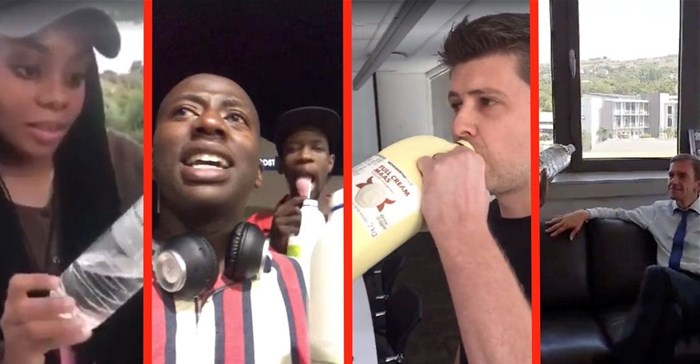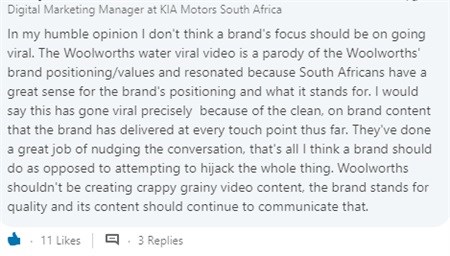Woolies recently struck gold and landed its brand in the ever so elusive club of brands going viral, their response to catching lighting in a bottle (pun intended) was amazing and showed exactly how brands should embrace content creators in the digital space.
This, however, led me to have questions. I started wondering what the next steps were. I started wondering how brands could increase their chances of going viral. I had questions and I posted them on LinkedIn thinking nothing of it.
To my surprise, a lot of smart people responded, with varied opinions and insights.
Some of the comments that came from that thread were as follows:
All these opinions were great and insightful of course (add me on LinkedIn to view all of them), but they still didn't answer the question of how content goes viral.
Which lead me to people who know the viral phenomenon inside out. One of those people is Kevin Allocca, head of culture and trends at YouTube.
He shared that although a very small percentage of videos become viral sensations (reach more than a million views), those that do have three things in common:
- Tastemakers
- Communities of participation
- Unexpectedness
Tastemakers are influencers. They are people with a large following (online or offline) that are able to influence the opinion of their community.
Communities of participation constitute a crowd that will be responsible for the rapid propagation of content and even addition to it.
Finally, unexpectedness is about the content.
It’s more or less clear what to do with the first point: you need influencer marketing. It hardly ever happens that viral content comes directly from brands, brands tend to hop on the bandwagon once the fire has been lit. The true fire starters here are content creators, people such as TaFire whose Woolies water challenge garnered over 190 shares. Those are the people who help start and spread the fire.
The second point then kicks in once a handful of content creators get the post shared and circulating, that's when the community of participants follow and create their own versions of the content. And what about unexpectedness? This touches on some of the points I made on my LinkedIn post, about brands trying to control each and every aspect of the content they put out, over editing it to a point where its too perfect to have an element of surprise or unexpectedness.
When a user is positively surprised, they get a higher degree of emotional response to the content. In a number of studies, researchers used magnetic resonance imaging to show that the brain responds more positively to the unexpected stimuli than the expected stimuli. A different study researched which emotional responses were more likely to elicit social sharing, and came to the conclusion that surprise was the one.
To sum it all up, I still believe that going viral is a matter of luck. But there are certain steps and strategies that brands can follow to help increase the chances of getting more eyeballs on their content. However, using influencers as the base source of that content is the most important aspect of achieving virality.
Influencers are naturally gifted at creating content that spreads like wildfire and garner impress engagement numbers which encourages the broader community to participate if the content is surprising or unexpected enough to elicit some sort of response.
For as long as the internet lives, this mix is very likely to do the trick, or at least be a great place to start.

























































